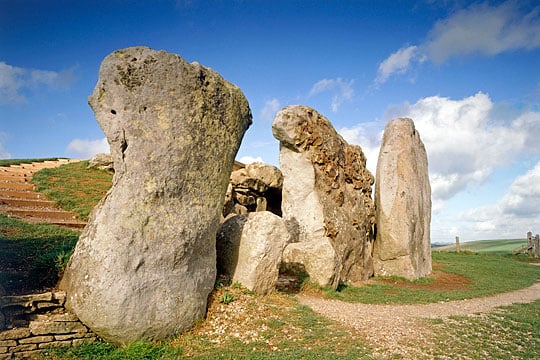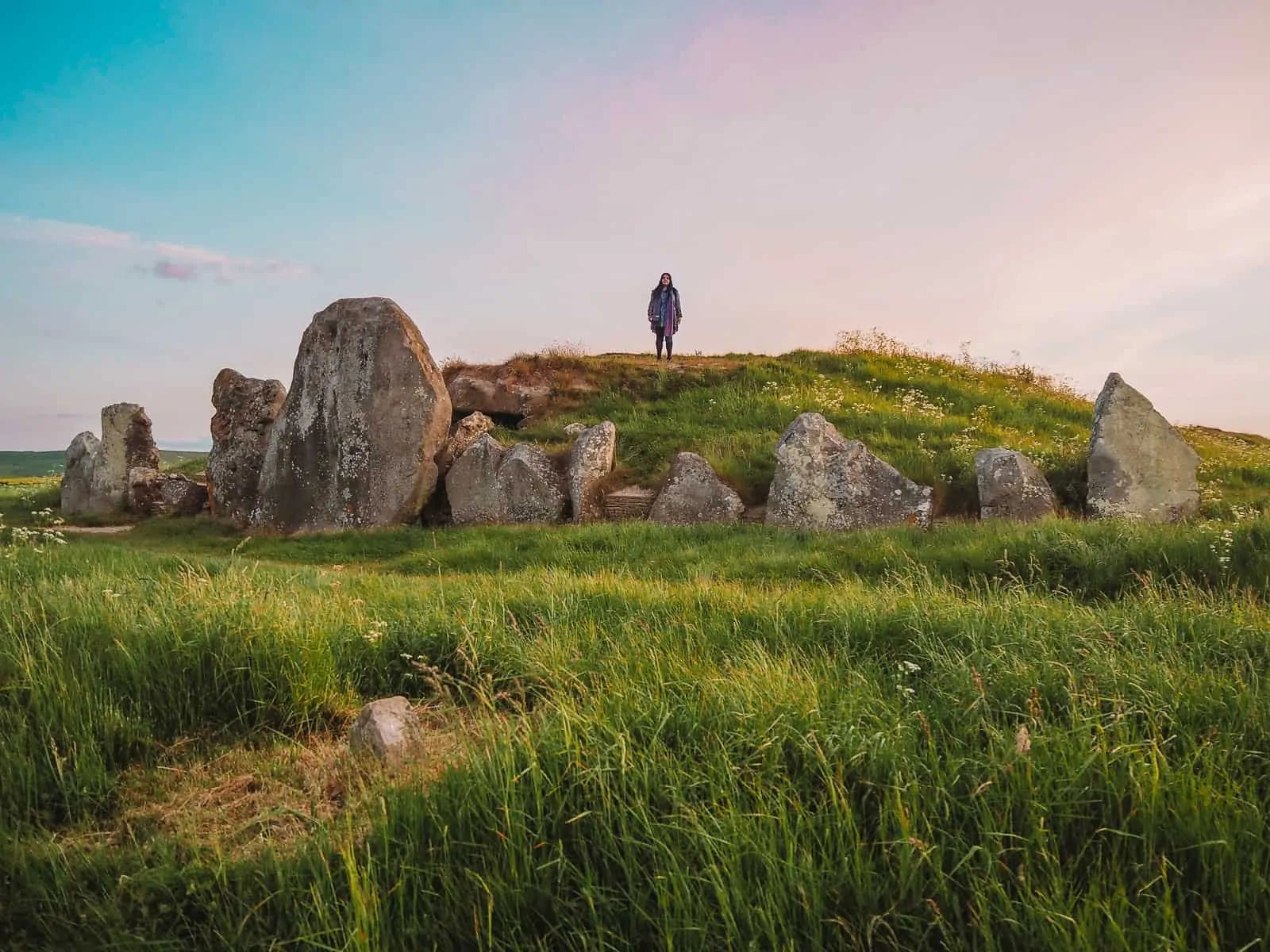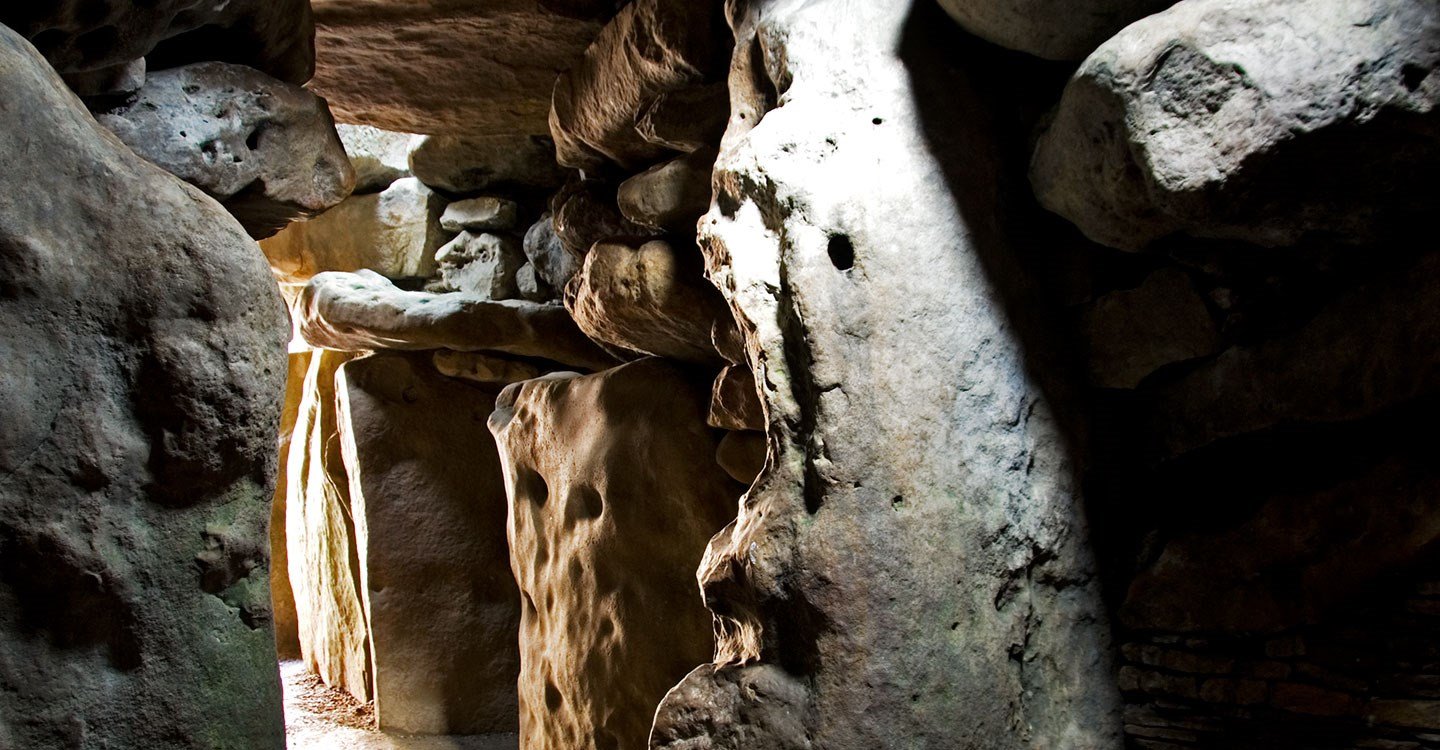The West Kennet Long Barrow, located near Avebury in Wiltshire, stands as one of the most impressive and well-preserved Neolithic chambered tombs in Britain. Built over 5,600 years ago, this monumental structure is a testament to the engineering capabilities and complex social structures of the Neolithic people. As one of the oldest and largest prehistoric burial sites in England, it offers invaluable insight into the rituals and customs of ancient societies.
A Monumental Structure from the Past
West Kennet Long Barrow stretches approximately 100 meters (328 feet) in length, making it one of the longest and most grandiose of its kind. Constructed from massive sarsen stones and earth, the tomb consists of multiple chambers. These chambers were used as burial spaces for individuals over many generations. The site was likely a communal burial ground, where family members and community leaders were interred together, suggesting a strong sense of collective identity and ritual significance in Neolithic society.

Burial Practices and Excavations
Excavations conducted in the 20th century uncovered the skeletal remains of at least 46 individuals, providing a glimpse into the burial practices of prehistoric Britons. The human remains were found alongside a variety of artifacts, including pottery, animal bones, and tools, which offer insights into the spiritual and cultural beliefs of the people who used the site. The inclusion of these items suggests that the tomb was not merely a place of burial but also a site of ritual and spiritual significance.

Research revealed that the tomb was used over many centuries, with multiple layers of burial, indicating that the West Kennet Long Barrow was not a one-time use structure but a site that saw continuous ritual use. The skeletal remains found within the tomb suggest the possibility of ancestor worship or other forms of spiritual practices that were important to the Neolithic community.
Spiritual and Cultural Insights
The location of the West Kennet Long Barrow, near Avebury’s massive stone circles, further underscores its significance in the Neolithic landscape. It is believed that the barrow, like other stone monuments in the area, played a role in the ceremonial practices of ancient Britons. The people who built and used the site likely saw the barrow as a sacred place for their dead, where rituals to honor ancestors took place.

The presence of grave goods such as pottery and tools suggests that burial practices in Neolithic Britain were highly symbolic and related to the beliefs about the afterlife. These grave goods could have been offerings to accompany the deceased in their journey to the next world, reflecting a complex understanding of death and the spiritual realm.
A Lasting Legacy
Today, West Kennet Long Barrow stands as a monumental reminder of Britain’s ancient past. It is a key archaeological site that continues to attract researchers and visitors alike. As one of the finest examples of Neolithic burial architecture, it provides an invaluable window into the social, cultural, and spiritual life of the people who lived in prehistoric Britain.

The long barrow’s preservation and the wealth of discoveries it has provided make it a symbol of ancient resilience. West Kennet Long Barrow offers us a glimpse into the beliefs and customs of those who lived in the Neolithic period, emphasizing the significance of communal life and spiritual practices in ancient societies.

